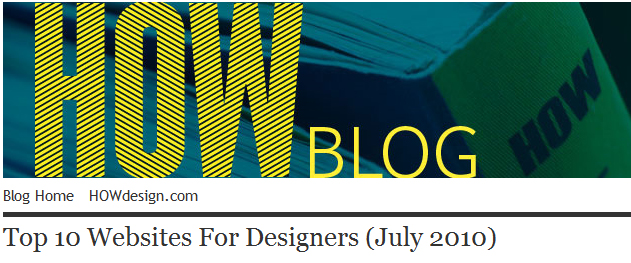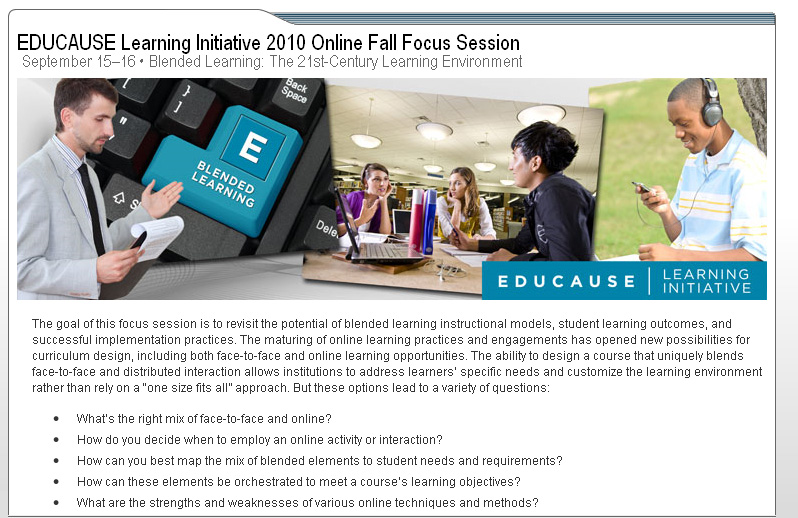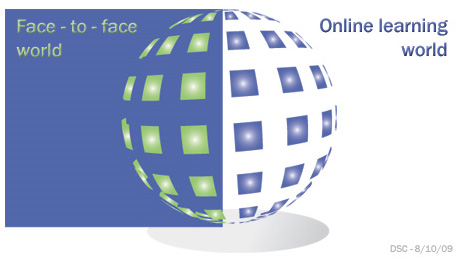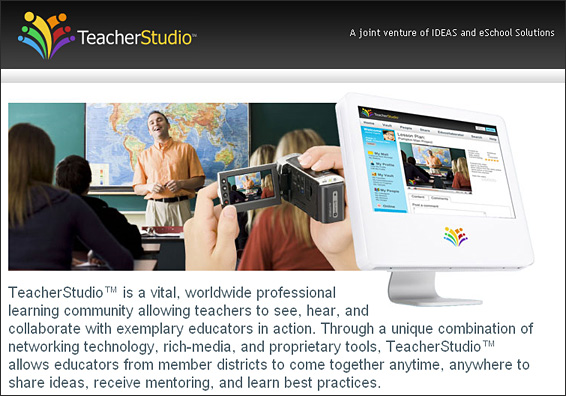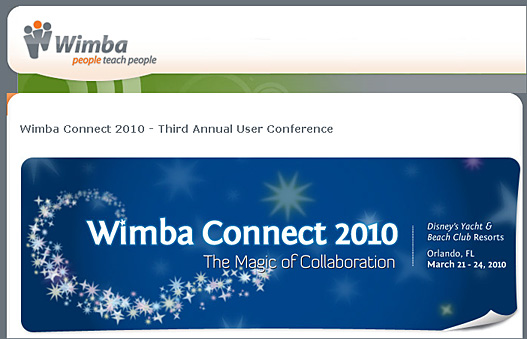22 books for beginner Instructional Designers –from The Upside Learning Solutions Blog by Amit Garg
…
Other excerpts/quotes:
- “The archetypes … are changing. Teachers are students. Students are teachers. And so our notion of a linear learning curve that is completely dictated by your age and by your grade and all this stuff, it all blows up.”
- But while students, parents, teachers and administrators all appear to be more open to online learning, the infrastructure to accommodate that demand is still evolving—and at this point still falling short, the survey finds.
- Administrators appear to be reacting to the demand by shifting their focus toward online learning for students. Yet their primary focus for online learning continues to be for professional development, the report says.
Public School 69 teachers the first in NY to experience a new concept in K-12 education: the digital teaching platform — from eSchoolNews.com
Dallas, Texas — June 23, 2010 — Public School 69 – The New Vision School, an 87-year-old school in the Bronx surrounded by single-family homes and low-rise apartment buildings, has plenty of experience with technology. But this month the school catapulted to the forefront of New York’s educational technology cutting edge as the first public school in the state to introduce its teachers to a new concept emerging in K-12 education: the digital teaching platform.
This June, 12 teachers from P.S. 69 participated in a comprehensive professional development program to introduce the Time To Know digital teaching platform to their fourth and fifth grades classes this fall. Time To Know is a complete, interactive curriculum system designed specifically for today’s one-to-one computing classrooms. The digital teaching platform empowers teachers to easily manage instruction, individualize learning, assess mastery in real time, and provide immediate feedback to students. Designed around guided constructivist principles, Time To Know’s digital comprehensive curriculum helps students build 21st century skills, including problem-solving skills, higher order thinking, and cooperative learning to prepare them for high stakes tests and the future.
…
“When your school test scores are in the mid-90s, it’s difficult to maintain and improve upon that level of performance. But when I saw Time To Know, I knew this was a tool to bring my school to the next level. A key benefit of the program is that it allow teachers’ individual personalities and teaching styles to shine,” said Cohen. “My teachers are thrilled with the professional development they’ve received. The Time To Know staff members are very knowledgeable about the standards for New York City and for the state, and how to meaningfully connect the standards with curriculum and assessment to improve student achievement.”
Top 100 technology blogs for teachers — from onlinedegrees.org
Research Digest: Disruptive Innovation–A Virtual School Created for Teacher Education — from edlab.tc.columbia.edu
Article Review (book chapter)
Drawn on Kress’s (1995) multimodal theory and the multiliteracies theory (e.g., New London Group, 1996), Faulkner & Latham present a case study on the development of a virtual primary school as a digital tool to disrupt norms of teaching and learning in teacher education programs. The School of Education at RMIT Unviersity, Australia, created a virtual school called Lathner Primary to have preservice teachers experience pre-programmed simulations in an interactive virtual space and seek reflective ideas around what schools and teachers need to respond to new learning challenges. The virtual school also serves as teachers’ affinity space to exchange innovative ideas and concepts of teaching.
This case is significant in enlightening reformers and scholars to consider a potential (blended) model for new development in teacher education, and in contributing ideas to teacher education in distance learning. It narrates in detail the development of a virtual project and student teachers’ experiences. Instead of the conventional model of sending student teachers to various physical sites, the virtual space not only serves as a student teaching placement site but also creates a space for all student teachers to share and discuss their teaching practices collectively.
From DSC:
Blended learning — also called hybrid learning — offers the best of both worlds. A great way to go!
Also see:
Also see:
TeacherStudio Brings Web 2.0 Tools to Professional Development — from The Journal by Scott Aronowitz
AT&T infusion to fund K-12 professional development for mobile learning — from The Journal by David Nagel
An infusion of nearly $2 million has been awarded to Abilene Christian University to help it expand its mobile learning programs, including a K-12 teacher professional development initiative focused on the use of mobile technologies in teaching.
ACU, a private institution in Texas, launched its ConnectED mobile learning initiative back in 2008 and currently centers it around Apple’s iPhone and iPod touch devices. The overall goals of the initiative include fostering greater engagement of students and enhancing teaching and research through technology, as well as building connections between ACU and its community and other academic institutions.
The $1.8 million AT&T grant–being provided by AT&T subsidiaries and affiliates–will help build the infrastructure and provide financing and resources to support three programs operating under the umbrella of the mobile learning initiative: the K-12 Professional Development Institute, the Mobile Learning Research Program, and the AT&T Learning Studio.
Wimba Connect 2010 — check out the applications of these tools
OPENING KEYNOTE
Carol Vallone, CEO, Wimba
Teaching Math & Sciences with Wimba (Panel)Andrew Byrne & Kurt Mederer, Convent of the Sacred Heart; David Tao, Santosh Madhavan & Dan Lim, Florida Hospital College of Health Sciences; Michele Barbeau & Kem Rogers, The University of Western Ontario
Using Wimba to Engage and Empower an Academic Community of Learners: The Case of the Global Citizen
Linda Ralston & Rebekah Grow, University of Utah
Faculty Development Wimba Style
Janet Welch & Stacey Mateika, Red Deer College
Using Wimba Voice, Pronto, and Create in Synchronously in Wimba Classroom and Asynchronously in an Online Environment
Brooke Eberwine, Steven Frecka & Jamie Westyn, OHDELA
Small Scale Implementation of Wimba Classroom – The Possibilities Are Endless
Regina Bobak & Julie Wolfe, Bloomsburg University of PA
Language Learning with Wimba (Panel)
Teresa MacKinnon, University of Warwick Language Centre; Ana Garcia Allen, The University of Western Ontario; Barbara Cohen, Berkeley College
Wikis, Wimbas, Whatevers! What Teachers Weave!
Jane Overmoe, Dakota Prairie HS
Taking the Troy Colloquium Online + Wimba: The Solution to Quality Online Learning
Gayle Nelson & Peter Paige, Troy University
Wimba Product Presentation
Annie Chechitelli, Wimba
Presentations Live or On-the-Go with Wimba Classroom MP4 Archives
Jason Rhode, Northern Illinois University & Larry Holland, University of Arkansas at Little Rock
NCVPS Cultural Cafe
Thomas Moncrief, North Carolina Virtual Public School
Our Journey: From Face 2 Face 2 Online Masters Degree
Gary Shouppe & Tom McCormack, Columbus State University
So Many Choices, So Little Time: Effective Voice Tools Training
Stacey Powell & Kathy McClelland, Auburn University
Features, Technical Problems and Technical Support in Higher Education Wimba Classrooms
Mary Nell McNeese, Amy Thornton & Jalynn Roberts, University of Southern Mississippi
ALAKAZAM!!! Instantly Transform your Physical Classrooms into Lecture Capture Spaces Using Wimba!
Scott Smith & Brian Reed, Wimba; Mark Burris, Michael Merritt & Linda Stauffer, University of Arkansas at Little Rock
Using Wimba to Prepare for H1N1 and other Potential Disasters (Panel)
Phil O’Hara & Tim Fedak, Dalhousie University; David Tao & Dan Lim, Florida Hospital College of Health Sciences
Diminishing the Distance in Distance Ed – Wimba’s Live Tools: People Reaching People
Crystal Havely Stratton & Patricia Landy, Laramie County Community College
“Keep It Live” – What the Students Say!
Mike Scheuermann, Drexel University
Wimba Pronto 4 All: Pronto Invitations and Universal Integration
Marlen Rattiner & Chris Dixon, Wimba
Online Learning is all about Collaboration!
Mark Gensimore, Jed Friedrichsen & blendedschools.net
Bringing In Local and Global Guest Speakers through Wimba Classroom
Chunyan Song , Ann Steckel & Laura Sederberg, California State University, Chico
Envelop, Develop: Building a Statewide and College-Level Professional Development System with Wimba and your LMS
Terry Pollard & Christian Pruett, Mississippi SBCJC; Rebecca Butler, Northwest Mississippi Community College; Jennifer Nowotny, Wimba
Where Did My Wimba Go and Do Users Know It’s Missing?
Michael Rogers & Jim Wolfgang, University System of Georgia; Sean Hessenthaler, Wimba
The Professor is In: Lessons Learned in Delivery of Online Student Support
Michelle Escudier & Sharon Davis, Central Texas College
Pet Kangaroos and Other Tall Tails – Live and MP4 Examples, Best Practices and Case Studies on Using Wimba Down Under
Steve Watt & Thalia Cosmidis, NetSpot Pty Ltd
Reaching Over Wall: Linking Kindred Spirits via Live Web Conferencing
Phil O’Hara & Corinne Tobin, Dalhousie Unversity; Paul Lowe, University of the Arts London
Collaborating With Students – A Glimpse of the Future With Blackboard
Brian DeKemper, Solutions Engineer, Blackboard
The Blended Language Learning Consortium (presented remotely)
Paul Snookes & Judy Barker, University of Worcester
Bringing Wimba out of the Web and into the Classroom
Bryan Vandiviere, Kansas State University
Wimba Classroom Beyond Classes
Cory Stokes, Univeristy of Utah & Edwin Perez, Wimba
The Power of Wimba 6.0 Archives: Developing and Editing the Archive Library
Jun Yang, University of Maryland
From the Lands Down Under – Wimba Firing Up Staff and Students in Australia and New Zealand
Lisa Ransom & Oriel Kelly, Manukau Institute of Technology; Kerry Trabinger, Canberra Institute of Technology
A Triple Threat to Student Attrition: Three Disciplines, Three Perspectives, and Three Uses of Wimba Classroom to Improve Student Retention
Monica Brooks, Tracy Christofero, Karen Mitchell, & Marty Laubach, Marshall University
High Impact Pedagogy: Bringing Online and Blended Courses to ‘Life’ through Learning Simulation and Wimba
Kristen Betts, Drexel University
Video, Vodcasts, and YouTube – Oh My!
Sarah Bryans Bongey & Chery Takkunen, The College of St. Scholastica
Online Education and the Power of Web 2.0 for Student Retention
Felice Nudelman, The New York Times / Epsilen
The Ways Wimba Classroom Can Revolutionize the Offering of Online Degree Programs
Daniel Powell, University of Alabama School of Law
Using Breakout Rooms to Foster Faculty Development
Ann Morgan, Kelly Kist & Heather Zink, Rasmussen College
Computer Science “eXperience:” Using Wimba Tools to Enhance Computer Science Education
Adel Abunawass, Alexandra Young & Edwin Rudolph, University of West Georgia
The Virtual Student Experience: Addressing Emotional & Multiple Intelligences & Soliciting Student Feedback
Dawn Muhammad, Calumet College of St. Joseph & H. Jean Bryan, Ed.D., DePaul University
CLOSING KEYNOTE BY JEFF NOEL, THE DISNEY INSTITUTE
Jeff Noel, The Disney Institute
Poster Presentations
- Online Office Hours: How I Get Them To Attend
Lyndasu Crowe, Darton College - Enhancing Student/Instructor Interaction in the Online Environment through Podcasting
Heather Zink, Rasmussen College - Mastering the Point: Using Wimba Live Classroom with Effective PowerPoint Presentations to Enhance Online Learning
Sue Burris, National Park Community College - Unleashing Wimba: Letting Students Take Control. A case study in providing webinar technology for students to facilitate group work.
Laurie Grosik, Indiana University of Pennsylvania & Cori Dunagan, Edinboro University - Building Tech Capacity in a Non-Profit Collaborative Using Wimba Classroom
Bruce Roxburgh, Green Communities Canada









